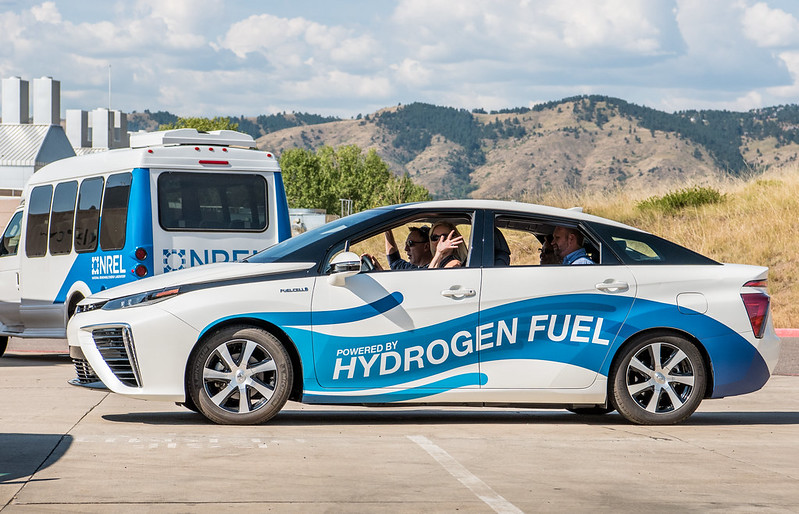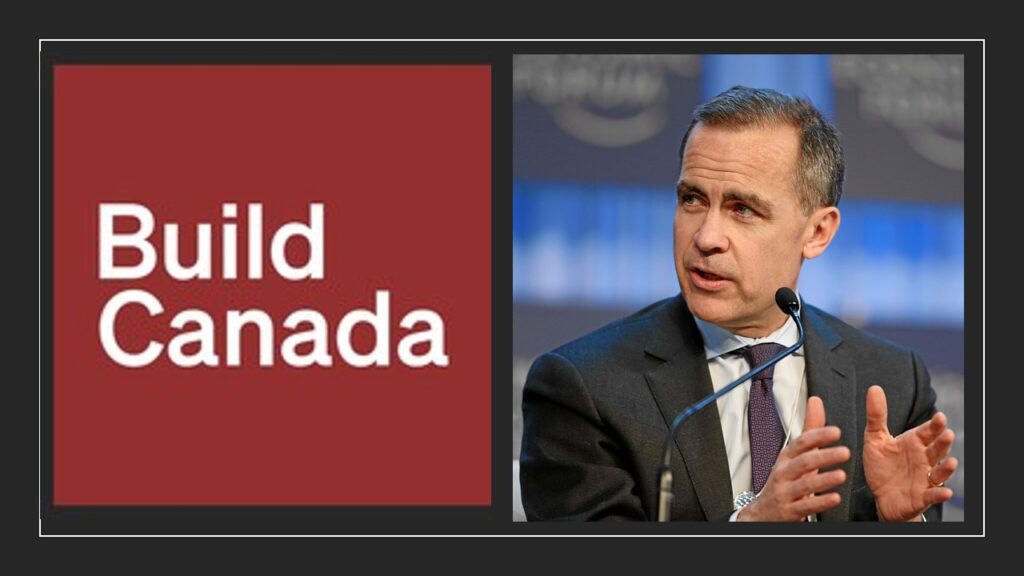Gas producer Air Products announced it intends to build several hydrogen refueling stations along a highway linking the two largest cities in the Canadian province of Alberta. Despite this expansion, interest in hydrogen to reduce greenhouse gas emissions in transportation remains sluggish across the country and the world.
Air Products’ proposed “hydrogen highway” will consist of a network of hydrogen refueling stations built along the Queen Elizabeth II highway corridor. The network would span the roughly 300 kilometer distance between Calgary and Edmonton, Alberta’s two largest cities. Air Products claims the refueling stations would be similar to roadside gas stations.
The company described the planned facilities as “permanent, multimodal, and commercial scale,” capable of refueling up to 200 heavy trucks or 2,000 cars per day. It did not indicate how many stations would be built, their locations, an estimated cost, or whether Air Products would operate the stations.
Air Products’ proposal represented the only major project announcement at the 2024 Canadian Hydrogen Convention held last month.
“Hydrogen must, and will, play a role in solving the climate crisis,” Eric Guter, Air Products’ vice president of Hydrogen for Mobility, said at the convention announcement.
Guter described the convention attendees as “climate leaders” who would chart a new course to ensure “that our future energy supply would be both secure and carbon free.”
Despite this optimistic attitude, interest in hydrogen lags both internationally and in Alberta’s capital region, which Air Products aims to develop into the “centre of Western Canada’s hydrogen economy.” The company’s claim that its Hydrogen Energy Complex will be net zero has yet to be proven, as the facility is not yet operational.
Auto-thermal Reforming Technology
Last year, Air Products announced it was building a hydrogen refueling station, currently under construction in Edmonton, near its “net-zero” Hydrogen Energy Complex. A temporary mobile fueler located on the site of the future refueling station is the only hydrogen refueling facility currently operating in Alberta.
Air Products claims the Edmonton facility will capture over 90 percent of carbon dioxide emissions because, unlike other facilities that produce hydrogen from natural gas, the Edmonton facility will use auto-thermal reforming (ATR) technology instead of steam methane reforming (SMR). When combined with carbon capture and storage (CCS), ATR theoretically can capture more carbon dioxide at a lower cost.
ATR’s effectiveness depends on the use of CCS, which has consistently underperformed despite considerable industry hype.
Shell Canada’s Quest facility, one of a small number of commercial-scale hydrogen producers operating worldwide, uses the SMR process and also promised 90 percent or better carbon capture rates. However, a 2022 study by Global Witness reported that the facility only captured about 48 percent of carbon emissions. The same study also determined that the Quest plant was producing more emissions than it captured.
According to a 2021 study by the Pembina Institute, though carbon capture rates of 90 percent have been demonstrated, they had not yet been applied to the actual production of hydrogen via SMR.
Moreover, the carbon footprint calculations of hydrogen production from natural gas rarely takes into account the carbon intensity of upstream emissions — the production, processing, and transportation of natural gas to the hydrogen facility. This component is often a considerable source of hydrogen-related emissions, and, unlike the hydrogen production phase of the operation, carbon capture of upstream emissions from the production of natural gas is not integrated into this process.
Methane emissions from the production of natural gas, which is needed for hydrogen production, are a major contributor to climate change, and are estimated to have 80 times the warming power of carbon dioxide.

In addition to these obstacles to the likelihood of genuinely “net-zero hydrogen” becoming a reality, Air Products and other hydrogen producers have a potentially more significant problem of possible limited consumer demand. At least one report suggests that, in the first quarter of 2024, only 223 new hydrogen fuel cell vehicles were sold in the United States, all of which were in California. That was 70 percent below 2023 levels. Sales and availability in Canada appear to be sluggish as well, with 2023 and 2024 Toyota hydrogen-powered Mirai models only available in British Columbia and Quebec for the foreseeable future.
At last year’s Canadian Hydrogen Convention, Edmonton Global — a foreign direct investment agency — initiated the 5,000 Hydrogen Vehicle Challenge, an effort to boost the number of hydrogen-powered vehicles on the road in Western Canada by 2028.
But without the means to fuel hydrogen vehicles, consumer interest is understandably low. High start-up costs — a new Mirai starts at nearly $55,000 — are an additional obstacle to widespread adoption.

It appears that the bulk of consumer interest for hydrogen fuel cell vehicles in Alberta is primarily limited to government or semi-public organizations. The Edmonton International Airport announced last year that they entered into an agreement to acquire a fleet of 100 Mirai models for airport operations, while the provincial government acquired three Mirais for their own use to demonstrate the technology. Edmonton Transit Services also acquired two hydrogen buses as technology demonstrators, but canceled plans to acquire 40 hydrogen fuel cell buses, opting for cheaper diesel models instead.
In March, the city paused plans to develop a hydrogen bus refueling center announced by Edmonton Mayor Amarjeet Sohi at last year’s hydrogen convention.
Progress on hydrogen development appears to be dependent on government investment, and limited to tests and trials. The Air Products hydrogen plant currently under construction received $475 million from provincial and federal government sources, according to the company. As part of an Alberta Motor Transport Association (AMTA) pilot, in January a hydrogen-powered truck made a roundtrip journey from Edmonton to Calgary, though it carried an empty trailer.
Arjan Sharma, branch manager of Fleet and Facility Services with the city of Edmonton, said that the city’s decision to pause the hydrogen bus refueling project is not related to Air Product’s announcement that it intends to construct a network of hydrogen fueling stations.
“The Air Products facility does not impact the city’s current hydrogen fueling plans,” said Sharma. “As stated, we remain committed to transitioning the city fleet to lower and zero-carbon emission options with hydrogen being one of the technologies that is being tested.”
Industry representatives and politicians speaking at last month’s hydrogen convention made frequent references to what they termed hydrogen’s “chicken and egg” problem. In its announcement, Air Products claimed the development of the new hydrogen refueling infrastructure would “help Western Canada reach a goal of 5,000 hydrogen or dual fuel vehicles on the road in five years.”
The company also noted that its first permanent hydrogen refueling station, which is expected to come online in 2025, was supported by $1 million in funding from Natural Resources Canada.
Subscribe to our newsletter
Stay up to date with DeSmog news and alerts







